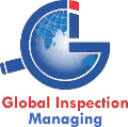Bangladesh has rapidly become a key player in the global manufacturing landscape, especially in industries like textiles, leather goods and pharmaceuticals. With its growing reputation for producing high-quality goods at competitive prices, Bangladesh is an attractive sourcing destination for businesses worldwide. In this article, we’ll explore why Bangladesh is a top choice for manufacturing, the types of inspection services essential for ensuring product quality and how to choose the right inspection partner.
Why Choose Bangladesh for Manufacturing?
Bangladesh has made remarkable strides in the manufacturing sector, positioning itself as a hub for various industries. Several factors make it an appealing destination for businesses seeking reliable suppliers and cost-effective production.
Key Industries in Bangladesh
Bangladesh is known for its booming textile and garment industry, which is one of the largest in the world. Beyond textiles, the country is also a key player in producing leather goods, jute products, pharmaceuticals and footwear. These industries have helped establish Bangladesh as a major exporter, especially to markets in Europe, North America and Asia.
Benefits of Sourcing from Bangladesh
One of the primary advantages of sourcing from Bangladesh is the country’s competitive labour costs. Businesses can benefit from high-quality manufacturing at a fraction of the cost compared to other countries. Additionally, the Bangladeshi government has made efforts to foster a favourable environment for foreign investments by offering tax incentives and simplified regulations. The combination of a skilled labour force, competitive pricing and government support makes Bangladesh a strategic location for manufacturing.
Types of Inspection Services in Bangladesh
Ensuring the quality of products sourced from Bangladesh is critical for maintaining your business reputation and customer satisfaction. To that end, businesses rely on various types of inspection services to verify product quality and compliance with international standards:
- Pre-production inspection: Pre-production inspection is conducted before manufacturing begins to ensure raw materials and components meet the required specifications.
- During production inspection: This inspection is conducted during different stages of the production process. This helps identify any potential issues early and reduces the risk of defects in the final product.
- Pre-shipment inspection: Before the products are shipped, a final inspection is conducted to ensure everything meets the agreed-upon quality standards, packaging and labelling.
- Container loading check: This inspection ensures that the goods are properly packed and secured during the shipping process to prevent any damage while in transit.
Each inspection stage is vital in ensuring that your products meet international quality and safety standards.
Key Industries That Rely on Inspection Services in Bangladesh
Several industries in Bangladesh depend heavily on inspection services to maintain product quality and meet the standards of international markets. Here are some of the key sectors that require rigorous inspections:
Textiles & Garments: The textile and garment industry is the backbone of Bangladesh’s economy. Inspection services here focus on verifying fabric quality, stitching and ensuring the products comply with international safety and ethical standards.
Leather Goods: Bangladesh is a major exporter of leather products, including bags, wallets and accessories. Inspection services ensure that leather quality, craftsmanship and safety regulations are adhered to.
Jute Products: As one of the largest producers of jute products in the world, Bangladesh exports jute bags, carpets and other goods globally. Inspections are necessary to maintain quality and consistency in production, especially for environmentally conscious consumers.
Pharmaceuticals: The pharmaceutical industry in Bangladesh has seen significant growth in recent years. Inspection services in this sector ensure that products meet stringent international standards for safety, efficacy and regulatory compliance.
Footwear: Bangladesh is also a growing exporter of footwear, particularly in leather shoes. Quality control inspections ensure that materials, craftsmanship and comfort levels meet the expectations of international buyers.
The Importance of Quality Control in Bangladesh
Quality control is essential when sourcing from Bangladesh, as it helps ensure that products meet the required standards of both the business and international markets. Without proper inspection, businesses run the risk of receiving defective products, which can lead to costly recalls, damaged reputation and loss of customer trust. By implementing rigorous quality control measures at every stage of the production process, businesses can minimize risks and maintain high product standards.
How Inspection is Handled in Bangladesh
The inspection process in Bangladesh typically begins with a pre-production inspection, where raw materials are checked for quality and compliance with industry standards. Once production is underway, during-production inspections take place to monitor quality and catch any issues early. After the products are manufactured, a pre-shipment inspection is carried out to verify that the final goods meet all quality, safety and packaging requirements. Finally, a container loading check ensures that the products are packed securely for transport to their destination.
Each stage of the inspection process is designed to identify and address potential problems before the products reach the market, ensuring that the quality of your goods is maintained.
Why Choose Global Inspection Managing as Your Inspection Partner?
When it comes to inspection services in Bangladesh, Global Inspection Managing stands out as a trusted and experienced partner. With a deep understanding of the local market and industries such as textiles, leather, pharmaceuticals, and jute, we offer comprehensive inspection services tailored to meet international standards. Our local presence ensures quick turnaround times and effective communication throughout the inspection process.
Our expertise in handling the complexities of Bangladeshi manufacturing ensures that your products will meet the highest quality standards, from the factory floor to the shipping container. With competitive pricing, clear reporting and a commitment to transparency, Global Inspection Managing is the ideal partner for businesses looking to source reliable, high-quality products from Bangladesh.
The country’s growing manufacturing sector presents significant opportunities for businesses. By partnering with a reliable inspection company like Global Inspection Managing, you can ensure that the products you source from Bangladesh are of the highest quality, meet international standards, and ultimately satisfy your customers.
